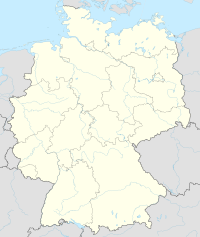Danevirke
| Danevirke | |
|---|---|
| Schleswig-Holstein | |

Danevirke: construction phases
|
|
| Type | Walls, ramparts, trenches |
| Height | 3.6 - 6 m |
| Site information | |
| Controlled by | Danes (Germanic tribe) |
| Open to the public |
yes |
| Condition | Ruin |
| Site history | |
| Built | before 500 AD. Multiple later expansions. |
| Built by | Unknown initiator. Expanded by King Gudfred, Harald Bluetooth, Canute IV, Valdemar I and others. |
| In use | 974, 1848, 1864. |
| Materials | Earth, timber, stone, bricks |
The Danevirke (modern Danish spelling: Dannevirke; in Old Norse; Danavirki, in German; Danewerk) is a system of Danish fortifications in Schleswig-Holstein, Germany. This important linear defensive earthwork across the neck of the Cimbrian peninsula was initiated by the Danes in the Nordic Iron Age at some point before 500 AD. It was later expanded multiple times during Denmark's Viking Age. The Danevirke was last used for military purposes in 1864 during the Second War of Schleswig.
The Danevirke consists of several walls, trenches and the Schlei Barrier. The walls stretches for 30 km, from the former Viking trade centre of Hedeby near Schleswig on the Baltic Sea coast in the east to the extensive marshlands in the west of the peninsula. One of the walls (named Østvolden), between the Schlei and Eckernförde inlets, defended the Schwansen peninsula.
According to written sources, work on the Danevirke was started by the Danish King Gudfred in 808. Fearing an invasion by the Franks, who had conquered heathen Frisia over the previous 100 years and Old Saxony in 772 to 804, Godfred began work on an enormous structure to defend his realm, separating the Jutland peninsula from the northern extent of the Frankish empire. The Danes however, were also in conflict with the Saxons south of Hedeby during the Nordic Iron Age and recent archaeological excavations have revealed that the Danevirke was initiated much earlier than King Gudfred's reign, around 500 AD and probably well before that even.
...
Wikipedia

